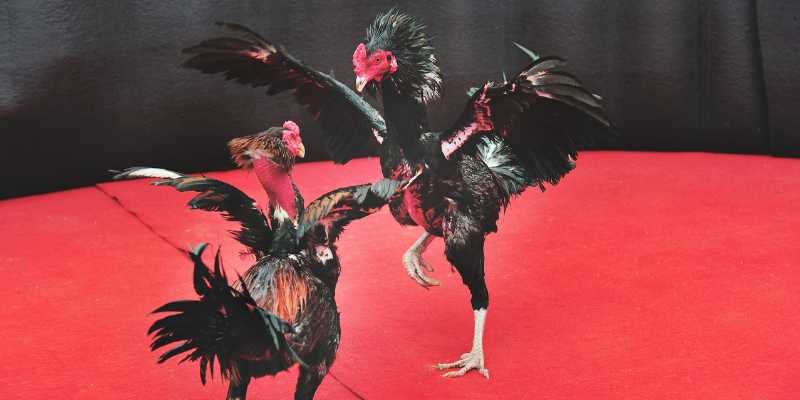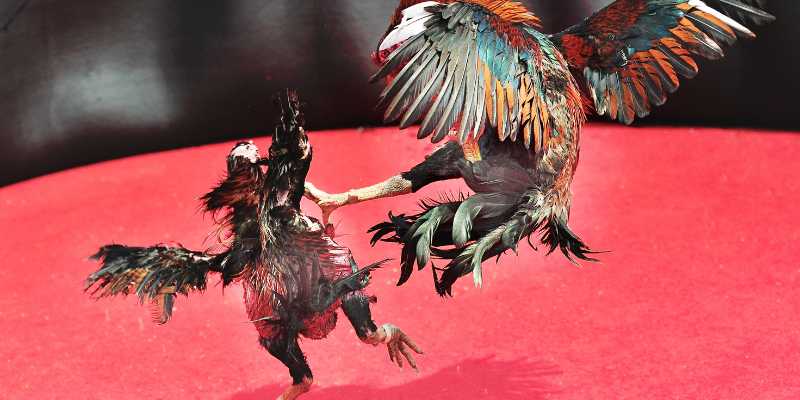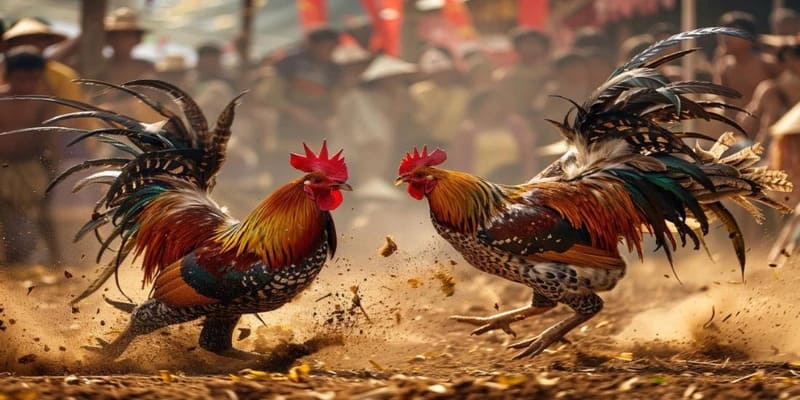Training fighting cocks is an indispensable part in helping chickens become excellent fighters in matches. This process not only requires skill and patience but also requires a deep understanding of the characteristics and psychology of each chicken. This article bet88tl.com will give you an overview and details Fighting cock training, from the foundation to the keys to success in training, as well as how to care for and raise fighting cocks.
Learn about fighting cocks
To proceed Fighting cock training effectively, it is important to understand the biology, personality and living environment of fighting cocks. Understanding these factors will help breeders have accurate direction in each stage of training.
Characteristics similar to fighting cocks
Fighting cocks usually have healthy bodies and well-developed muscles. They have strong legs, thick fur and often bright colors.
- The fighting cock’s body is mostly compact but very sturdy.
- They have the ability to move quickly, which helps them outperform other chicken breeds in matches. In addition, some fighting chicken breeds also have very high fighting ability and can endure pain and hardship.
Characteristics of fighting cocks
Fighting cocks have quite independent and confident personalities. They are not simply warriors but also have unique intelligence:
- Fighting cocks are often aggressive, especially in situations where they have to defend their territory or clash with their own kind.
- Therefore, when choosing fighting chicken breeds, you should focus on individuals with strong personalities to make the process easier Fighting cock training.
Living environment affects development
Habitat plays a big role in the development of fighting cocks. Chickens need spacious space and reasonable nutrition to develop fully.
- If chickens are raised in a clean, dry, unpolluted environment, they will help them grow healthy and have fewer diseases.
- Furthermore, regular physical activities also help strengthen the strength and spirit of fighting chickens.
Fighting cock training process
Procedure Fighting cock training is not limited to stimulating aggression but also includes many aspects such as physical strength, skills and psychology. Below are some basic steps in the training process.

Prepare training methods
To ensure the process Fighting cock training goes smoothly, you first need to prepare a consistent training method.
- It is necessary to choose exercises appropriate to each age and level of development of the chicken.
- Supplement a diet rich in nutrients, especially protein, to help chickens have enough health and energy for the training process.
A careful preparation will help minimize unnecessary risks when the chickens start exercising.
Physical exercises for fighting cocks
Just like athletes, fighting cocks need a suitable physical training program to achieve their best performance.
- Exercises such as running, jumping, kicking a ball or performing movements such as flying will help chickens develop endurance and agility.
- You should apply exercises to strengthen your legs, such as running long distances or practicing on different terrains.
In addition, you also need to pay attention to resting so that the chicken can recover strength and avoid overload.
Tactical training for fighting cocks
Just having health is not enough. To become a true warrior, fighting cocks also need to be meticulous in their tactics.
- Observing and analyzing your opponent’s fighting style will help you shape the way your chicken fights.
- Gentle fighting exercises between two fighting cocks will help them get used to real situations in matches.
Training strategies also need to be continuously evaluated and adjusted to ensure the cocks always maximize their ability in each match.
Care and nutrition for fighting cocks
Care and nutrition are an equally important part of the process Fighting cock training. It is necessary to ensure that chickens are provided with enough nutrients and a comfortable living environment to grow.
Appropriate diet

- A balanced diet including cereals, meat, vegetables and fruits will help improve the chicken’s resistance and overall development.
- Besides, vitamin and mineral supplementation is also extremely necessary, especially during the growing period of chickens.
If possible, learn and refer to the best foods for each type of chicken to ensure comprehensive development.
Clean the barn and living environment
A clean living environment will greatly contribute to improving the health of fighting chickens.
- Every day, you should clean the barn from waste, trash or unnecessary items.
- Checking and changing drinking water daily is also necessary to avoid bacterial infection in chickens.
Maintaining good hygiene not only protects the health of chickens but also increases their lifespan.
Monitor the health of fighting cocks
Monitoring the health of fighting cocks is something everyone needs to do to detect health problems early.
- If you see your chicken showing unusual signs such as not eating, not playing or showing unusual signs in behavior, take them to the doctor.
- Preventive vaccines are also indispensable and need to be administered at the prescribed time.
Good health will create good conditions for chickens to achieve maximum performance during the process Fighting cock training.
Conclude
Training fighting cocks is a complex but necessary process to develop successful fighting cock raising. Not only does it stop at knowledge training, it also includes caring for, nurturing and understanding the psychology of each chicken. Through this article, we hope you have gained more knowledge and new perspectives Fighting cock training, then apply it into practice to get the best results in the process of nurturing and training.


